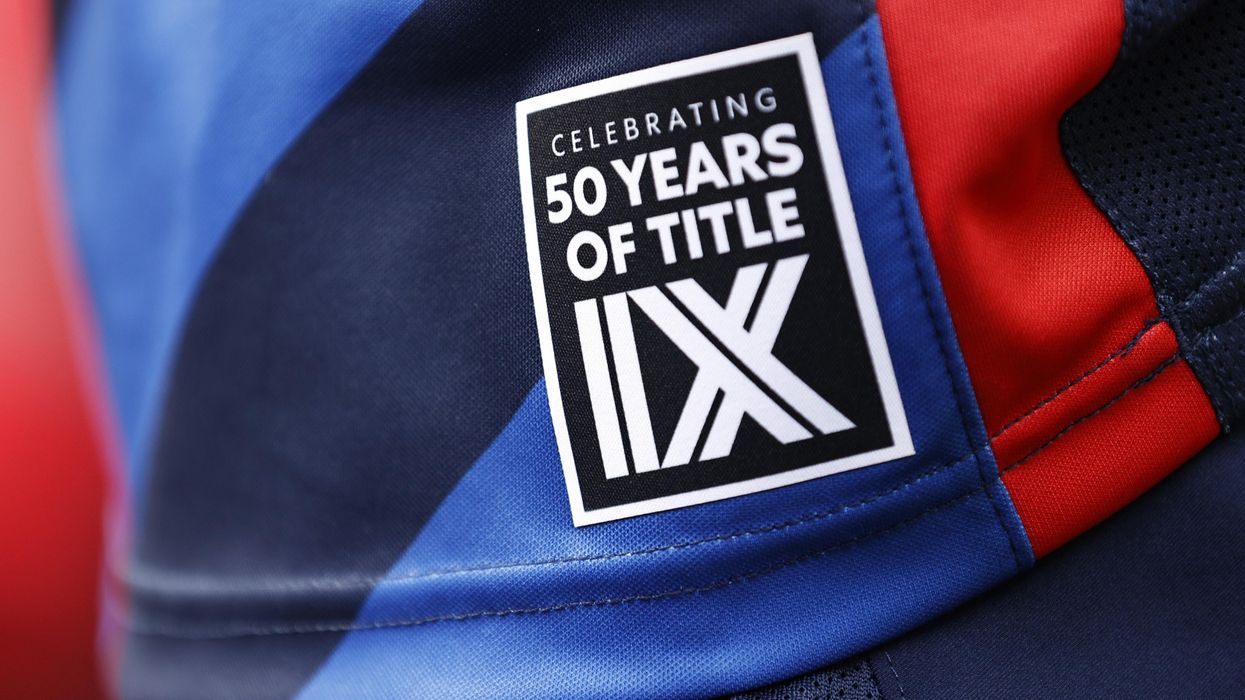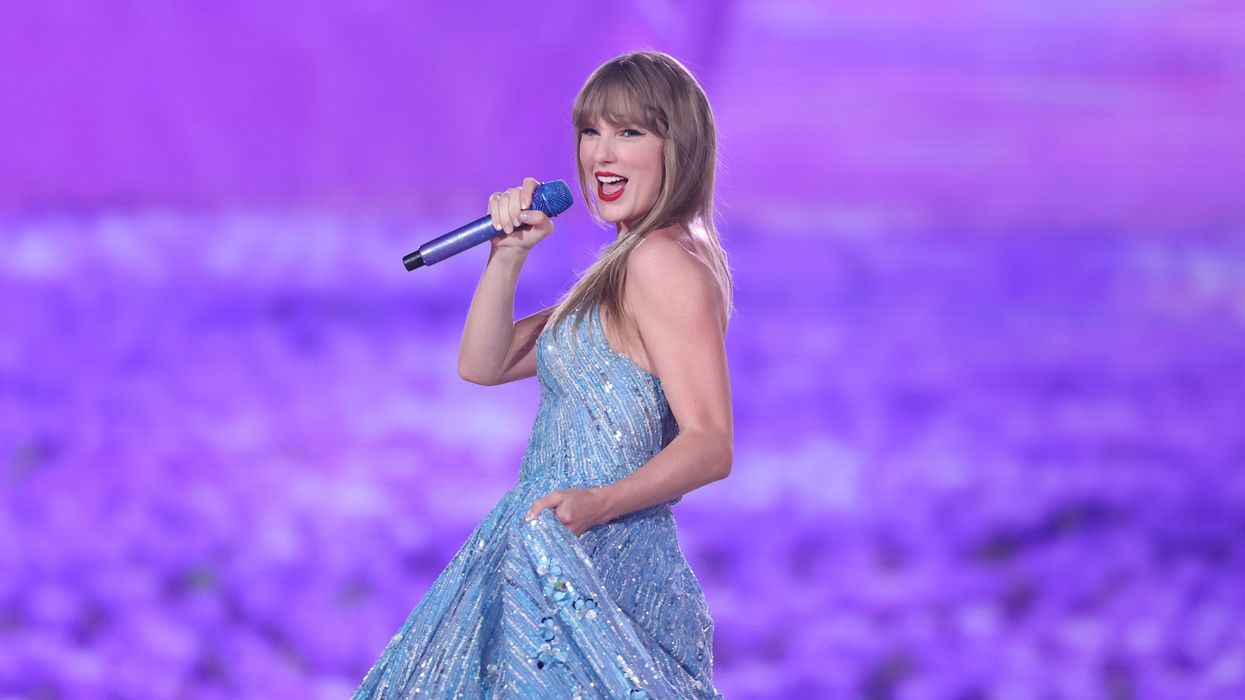Solomon is on the faculty of Stanford University's design school and a creator of civic futures programs like Vote by Design, Building America’s Teammates and AllVoteNoPlay.org,
In anticipation of Title IX’s upcoming anniversary, I sat down with Dr. Victoria Jackson, a sports historian and clinical assistant professor of history in the School of Historical, Philosophical, and Religious Studies at Arizona State University. Jackson is also a former Pac-12 and NCAA champion runner. She writes and speaks about the intersection of sport and society, exploring how the games we play (and watch) tell us much about the communities – local, national and global – in which we live.
As a civic futurist and creator of the AllVoteNoPlay.org civic playbook for student athletes, I wanted to explore the historic significance of Title IX and the implications of this 50-year milestone for the future of women’s athletics. Jackson’s Ph.D. dissertation explores the history and impact of Title IX, and she is actively working on programs and research to make college sports more equitable, more sustainable, and more inclusive.
My running times may be slower than Jackson’s (by a lot), but we share a passion for using the college sports experience as an opportunity to not just grow athletes, but to grow citizens and leaders who contribute positively to society.
Lisa Kay Solomon: As we approach the 50th anniversary of Title IX on June 23, would you give us an overview of the legislation and its enormous impact on women’s sports? We’ve seen Sports Illustrated and ESPN focus on the anniversary, and prominent brands run ads on women’s sports, but I’m not sure if people really know the history of this legislation.
Victoria Jackson: I think it’s super important to remember that Title IX – the legislation itself – was not originally about sports. Fundamentally it’s legislation focused on civil rights – providing equal access to educational opportunities – which also include equal opportunity to play school sports.
When we frame Title IX using the language of its original mission of access to education and opportunity, it allows us to ground collegiate sports as a developmental activity that sits within the context of a college experience. Title IX helped expand this access to women, giving everyone the right to participate. More than anything, it’s a landmark legislation about inclusion.
Title IX is both inspirational and aspirational. If you're looking at the things people advocate for regarding women's rights, so much of it rests on education and using sports to develop your body for yourself.
What do you want all college athletes, especially women’s teams, to know about Title IX?
We've been seeing a lot of universities, sports conferences and major brands roll out Title IX programming to celebrate this important anniversary. But a lot of the framing and coverage is misleading about what the legislation is really about. The narrative seems to be a version of: “It was bad for women in sports, and now it's great thanks to Title IX. Women didn’t used to be able to play basketball, and now they can. Isn’t that wonderful?” It’s obviously more complicated than that.
One thing I always stress when I’m talking to student athletes is that there’s a responsibility that comes with being a woman in sports. You need to know the people that came before you who did the work to get to the place where it is now. And that we’re still working hard to get to where we need to go. Women’s equal participation in sports is not something any of us can take for granted.
We are in a period of erosion in all sorts of ways – not just in a sporting sense, but more broadly around women’s rights, bodily autonomy, and basic safety. Sports are the frontlines of that, and using your body for your own power and pleasure is a thing that a lot of women athletes take for granted in 2022 but shouldn't.
We all need to keep doing that work so that we can continue to protect what we have, and hopefully continue to expand opportunities.
Can you give us more context on the origin of Title IX and its relation to women’s liberation, as well as its implications for this moment?
Title IX’s anniversary is on June 23, which is approximately the same week that the Supreme Court may be overturning Roe v. Wade. If you talk to women who played sports in the ’70s and ’80s, they talk about Roe and Title IX almost interchangeably, and that you need both to really support women’s college sports and opportunities for women in higher education. This is an important part of the story that gets overlooked.
There are a lot of women athletes and coaches who are uncomfortable thinking of sports as a political act, especially as our environment has become so polarized. But the right to play sports and the right to make choices about your own body are so linked, and neither are set policy. They can’t be taken for granted. So, I think part of this important moment is to remind athletes that having the right to play sports in schools is a political process, too. And that’s a powerful stance because it means we can use our agency and our voice to influence it. It’s not something to shy away from.
You have so many women athletes talking about how sports isn’t political: “We're just trying to celebrate women in sports.” Well, sports are political. The right to play involves systems of power, access, and influence. So when we talk about athletes in the context of this anniversary, we have to talk about all of that. It’s not just a celebrity performative thing; it's about recognizing all the work that went into paving the way for these rights and opportunities, and the necessity for ongoing work.
What are some ways that women’s sports teams can honor this milestone?
There’s a lot of terrific media being created around it that I think would be great for more student athletes to watch and discuss. ESPN did a powerful segment around Mother’s Day celebrating mother-and-daughter duos. My friend and fellow historian Amira Rose Davis did a terrific piece looking at Title IX in a broader American cultural context. And USA Today did a comprehensive series looking at how Title IX is falling short of its promise.
I would love to see the conversations continue in all locker rooms – women’s and men’s – when students come back to campus for the new school year. We’re coming up on a really important voting year. There’s a lot at stake for women on the ballot – both in the big races, and more importantly, the local races – that will dictate rules around access to reproductive rights and general freedoms.
I really hope that coaches and athletes take time to acknowledge the responsibility and agency they have to protect what we have, to avoid letting these rights slide, and to pave the way for future athletes to enjoy even more freedom and access. Women deserve more resources and better opportunities, not less.
I couldn't agree more. Wouldn’t it be amazing to have 100 percent participation in the upcoming elections from all women’s sports teams? That would be a true tribute to Title IX and definitely a milestone moment to celebrate!
Curious how to bring more awareness and conversations about Title IX to your teams and communities? Check out the #AllVoteNoPlay civic drill on Title IX , and some of the resources below.
- Amira Rose Davis video essay (ESPN)
- Title IX: 37 Words That Changed America (Candace Parker's documentary)
- Sports Legacies Title IX Created (ESPN)
- Title IX Falling Short at 50 (USA Today)
- Title IX Then and Now virtual program (National Archives)
- Decades after Title IX, Girls Face Tough Battles on and Off the Field (PBS NewsHour)
- Athletes Unlimited Voices of Title IX (TEDx)



















